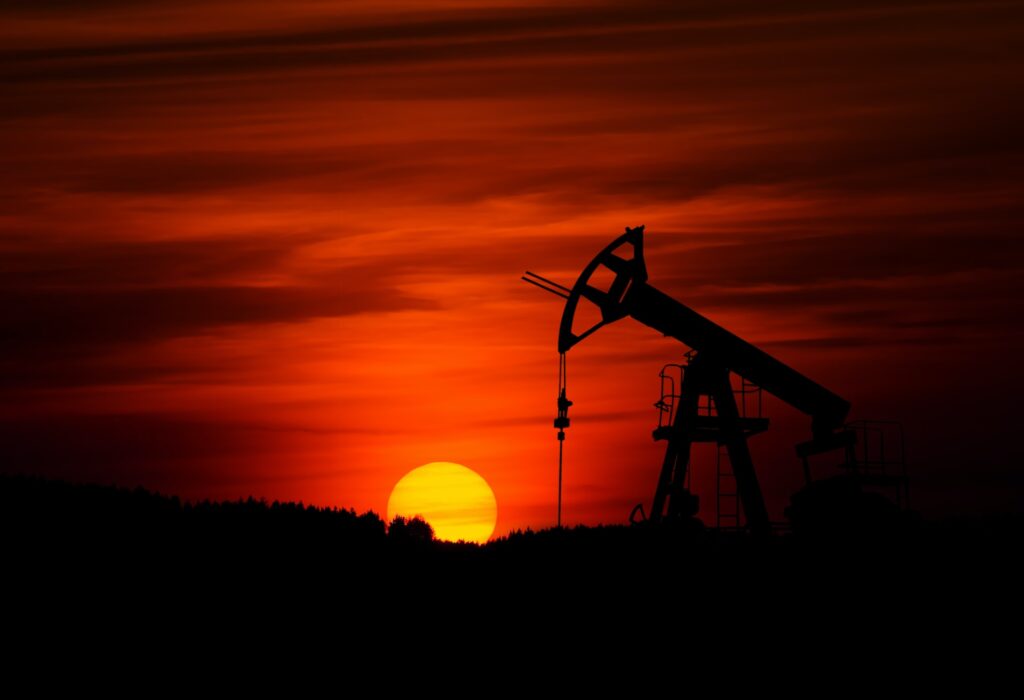The price of oil on world markets has literally been on a roller coaster ride over the past three years. While it was trading around USD 70 per barrel on the eve of the outbreak of the contagion pandemic at the turn of winter and spring 2020, in the second quarter of that year oil futures even went into negative territory for the first time in history. The post-Covid recovery and the subsequent Russian military aggression in Ukraine shot the oil price above $100, only to plunge to pre-war levels less than a year later. What developments should we expect in the market for this strategic commodity in the coming months?
Content
Literally like a bolt from the blue, news emerged at the beginning of April that the OPEC+ countries, led by Saudi Arabia, had agreed to further limit oil production. It should be recalled that the countries in OPEC+ had previously agreed to limit production to two million barrels per day, and this limit was due to apply until the end of this year.
How much will Saudi Arabia cut oil production?
But now there has been an even bigger cut of 1.16 million barrels per day, bringing the total reduction to more than three million barrels of oil per day, a drop of more than three per cent.
The oil production cuts announced in early April are not mandatory, but only voluntary. However, it cannot be assumed that any of the countries (at least the most important producers) will not join the agreement.
At the same time, Saudi Arabia, the leader of the entire OPEC+ group, has the largest share of the total reduction in production capacity. The latter has announced that it will cut production by 500,000 barrels per day beyond the existing agreements. The second largest reduction in production is in Iraq (by 211 thousand barrels per day) and the third is in the United Arab Emirates (by 144 thousand barrels per day).
Although the announcement of further oil production cuts came unexpectedly, it is not such a surprise after all. Indeed, the price of oil has begun to fall and, at the end of March, a barrel of Brent crude was even trading at less than $70. The last time the price of black gold was at that level was at the end of 2021, when it was on an upward trajectory. The OPEC+ group of countries thus decided to take decisive action against further cheapening, which was triggered by concerns about global economic developments in the wake of the collapses of several banks in the US and Europe.
For the world, this will mean having to get used to more expensive oil and its products again. On the other hand, there will also be benefits in the search for more efficient use of oil and energy in general, which in turn will be welcomed by the environment. However, for this effect to be more lasting, the price of oil would have to be higher for a much longer period. In other words, the price incentive for energy savings must be sufficient, as was the case with natural gas, the price of which literally skyrocketed last year.

Read also: Gulf Brokers Review – Free demo account, 800 instruments available
How will the oil price react?
As already mentioned, the main motive for the surprise additional oil production cut was the sudden cheapening of oil. The trigger was increased fears of an economic recession after Silicon Valley Bank and Signature Bank ran into trouble in the United States and Credit Suisse in Switzerland in Europe. The collapse of these financial institutions brought to mind the outbreak of the financial crisis in 2008.
But so far, it seems that the problems have been isolated and the price of oil has been pushed up. Shortly after the announcement of the OPEC+ decision, the Brent barrel climbed above $80, but did not stop there. In the following days in April, the price reached $85 per barrel, around which Brent has traded virtually continuously.
From a consumer point of view, this is unfortunate timing, as the motoring season, which traditionally peaks during the summer holidays, is about to get under way. This period of increased demand for fuel, combined with expensive oil, will make both petrol and diesel on the European market rather more expensive.
The rise in oil prices is, of course, not good news for the economy as a whole. In fact, it is a cost shock that the European economy has faced over the past year. And just when its effects seemed to be fading as energy commodity prices returned to their pre-war levels, a similar scenario may suddenly be repeating itself to some extent, at least in the case of oil. This will keep inflation at elevated levels for a longer period of time than originally anticipated. Again, this is not good news for consumers, their real incomes and the purchasing power of their savings.

TIP: How to invest: Trading on the stock market
Oil price – possible scenarios for the future
The price jump of up to $10 per barrel shortly after the announcement of the production cut was accompanied by new forecasts for the oil price for the rest of this year. US investment bank Goldman Sachs has raised its oil price target by five dollars to 95 by the end of this year. It also revised its outlook for next year upwards, this time by three dollars to as much as $100 a barrel.
The question is how the sudden rise in oil prices will affect global oil demand. The World Bank has issued an updated forecast for world economic growth, which should be slightly higher than the institution estimated in January this year. This could contribute to a further rise in oil prices as demand for oil could also be stronger than expected. At the same time, however, the threat of a recession, which is still hovering over the developed economies, may work against this. Another factor is the reaction of central banks to the current inflation developments. Inflation is falling in both the US and the euro area, which may indicate an easing of monetary policy restrictions, which would further support the economic recovery and thus oil demand and prices.

Continue reading: InvestaGO Review – A competing broker
This article is also available in other languages. Read the Czech version here: tradeinfo.cz. Slovak version can be found on our partner website.






